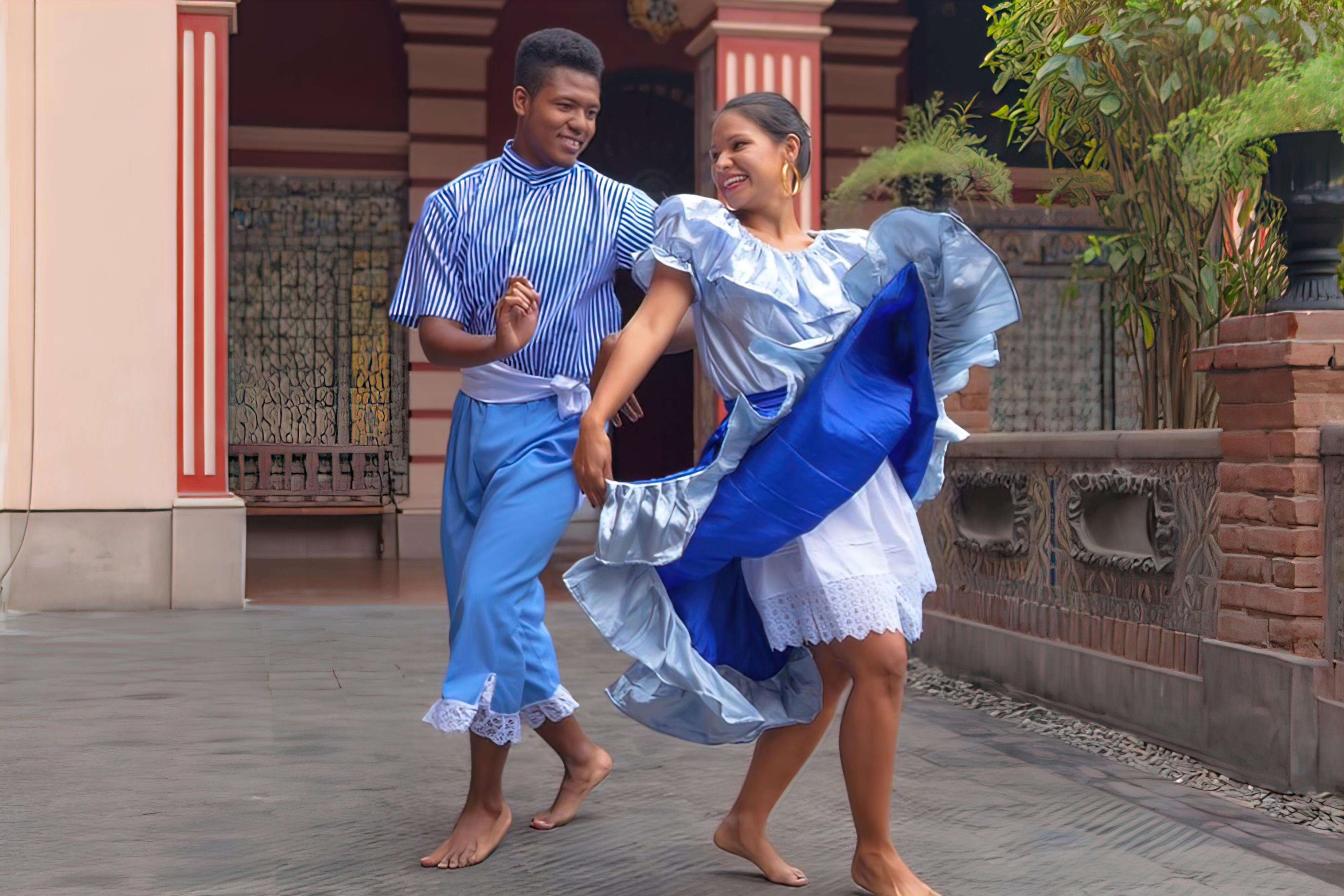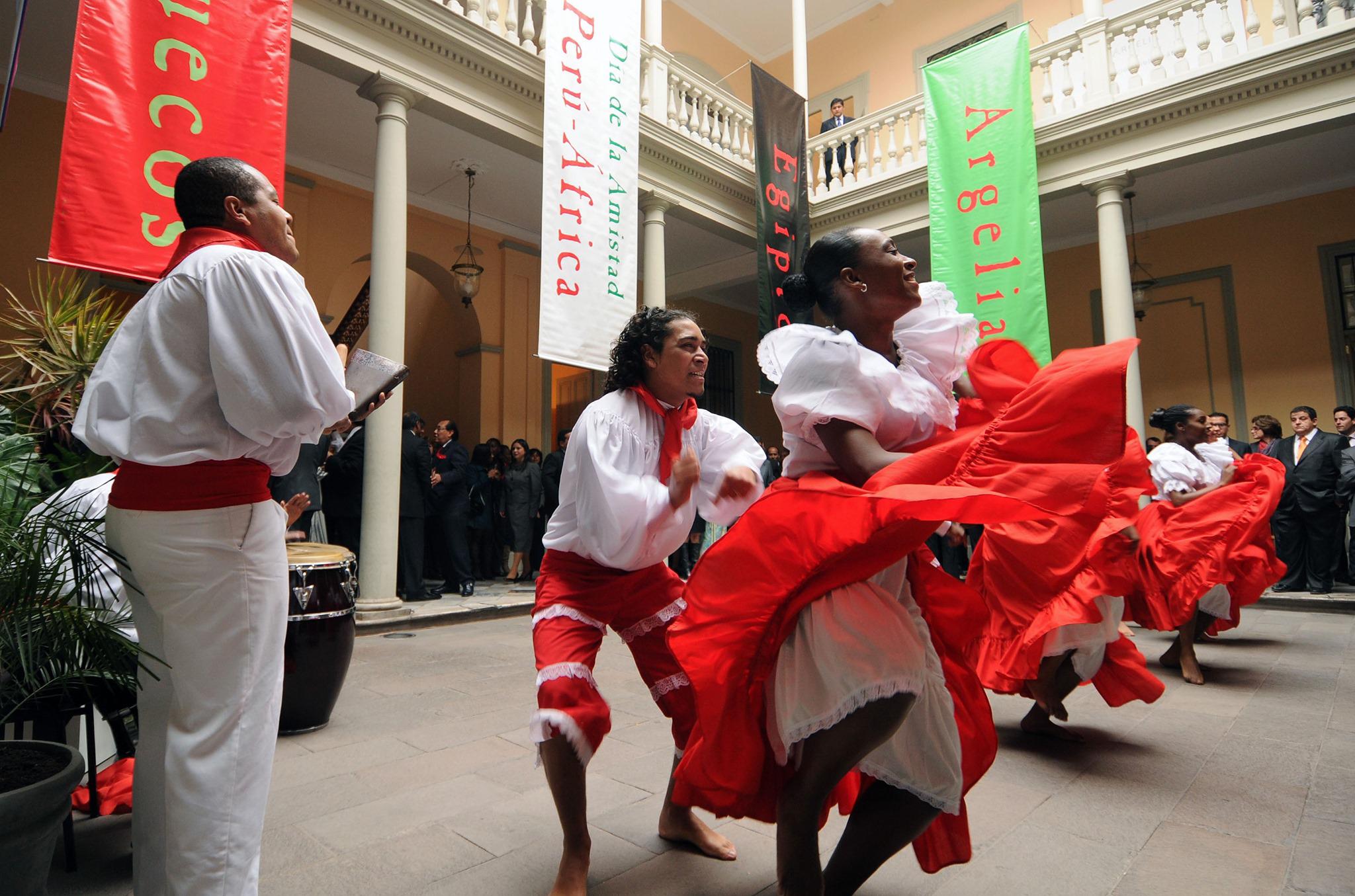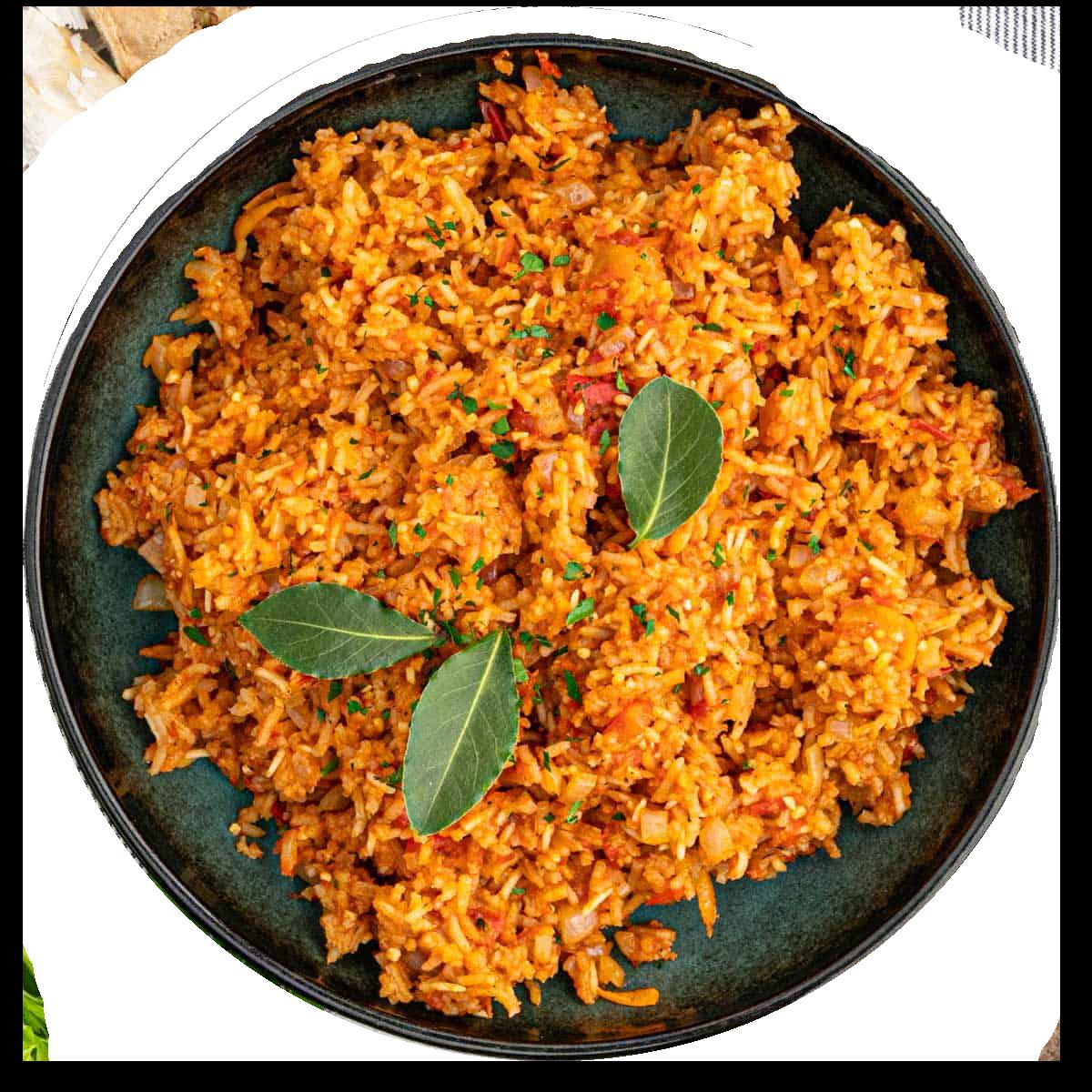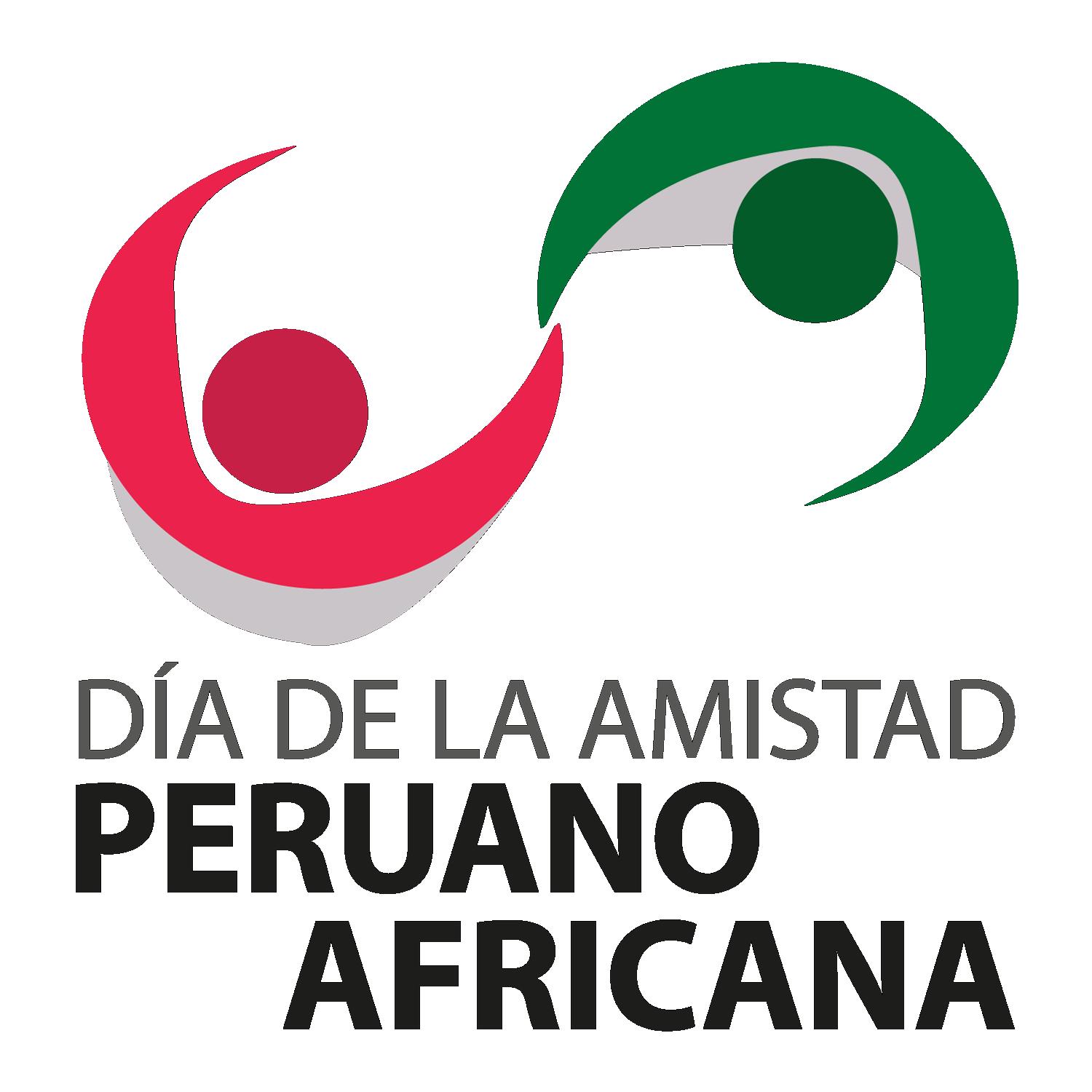Reflections on Peru´s relations with the African continent



Reflections on Peru´s relations with the African continent


MINISTRY OF FOREIGN AFFAIRS
The “negro” contribution to Peruvian culture
Recipe Jollof Rice
During the 1990s, several African countries began processes of democratisation and economic liberalisation. This democratic process allowed a group of almost 40 African countries to hold free elections, leaving aside the historic coups d'état, human rights abuses, instability, corruption, impunity, and extreme poverty that had characterised the African continent since 1960.
Simultaneously, economic reforms have led to sustained economic growth in several African states. In recent decades, high rates of sustained growth have been recorded, reaching a continental average of 3.8% growth by 2022, according to the International Monetary Fund. The United Nations Commission for Africa argues that macroeconomic improvement in Africa has enabled a favourable climate for doing business, creating new jobs, and reducing poverty levels.
Due to these advances, the African continent has attracted international attention and is considered the next frontier in the development of international relations, not only in the field of cooperation, but also in economic, commercial, cultural, and other exchanges. For example, countries like the United States, Russia, China, Japan, and the European Union are interested in Africa's potential and have sent high-level authorities. Also, they have participated in various forums with African Heads of State and Government since the beginning of the 21st century. In the same way, in the last 10 years, middle powers such as Brazil, Turkey and India have also developed closer ties with the African continent.
It is important to remember that Africa has eight economic integration processes underway. Furthermore, within the framework of the African Union, the creation of a continental free trade area stands out because it will reduce dependence on the exploitation of commodities. Likewise, African countries have managed to increase their capacities in infrastructure and technological updating.
The African continent represents both an opportunity and a challenge for Peru's foreign policy. Peru seeks to increase its relations with African countries through a greater presence, with the aim of increasing its sphere of influence on the continent, for which it has been implementing a strategy leading to:

1) strengthening bilateral relations with countries where a diplomatic headquarters has been established, through the preparation of comprehensive agendas, 2) advocating the establishment of diplomatic relations with African countries; 3) establishing partnerships with African countries with potential and proposing agendas of common interest; 4) implementing actions leading to increase trade.
Regarding this strategy, Peru should take advantage of the historical coincidences and common interests that unite us with this continent. Peru reaffirms the African culture that has nurtured our language, cuisine, dance, and other cultural demonstrations.
In reference to peace processes, it is necessary to highlight the significant role of Ambassador Javier Pérez de Cuéllar, in his capacity as Secretary-General of the United Nations, in mediation processes like Namibia, South Africa and Angola. In this regard, Peru projects a policy of coincidence with Africa, respect for international law and the self-determination of peoples, as well as the common search for cooperation, development, active and beneficial trade for the parties, and the preservation of the environment, aspects that will allow us to transcend in that continent.
Considering the framework of the strategy for the strengthening and development of Peru's presence in Africa, especially in the Sub-Saharan region, it is necessary for our country to improve its participation in the African Union (AU) as an Observer State.


In this sense, the AU is a key and indispensable actor to enhance Peru's projection towards Africa. Consequently, we would like to benefit from this multilateral space, as it represents an invaluable opportunity to strengthen relations with all African countries from a single common place. Since AU serves as a point of observation of African foreign policy and market tendencies, a
Peruvian presence in this organization will allow us to explore the potential benefits offered by Africa.
Among the different opportunities that can be obtained with a greater Peruvian presence on the African continent are the opening of new markets for Peruvian products and services, the promotion of our culture and country image, the promotion of candidacies and the establishment of common cooperation
It should be noted that Peru has already taken the first steps in this African multilateral space by becoming an Observer Member of the AU on 18 October 2005. However, in these 18 years, Peru has only participated in two AU Summit Meetings in 2006 and 2016, in Sudan and South Africa, respectively. The reason for this is that budgetary difficulties of our Diplomatic Missions in Africa have restricted the regular and periodic mobilization of our representatives to the
various AU meetings.
In view of the above, it is a priority to accredit a representative to serve as an Observer to the AU and to participate annually in the AU Summits. The eventual opening of a Resident or concurrent Embassy in Ethiopia would also be beneficial for Peru's participation in the UA.
Certainly, Peru's foreign policy towards Africa considers the projection of this continent into the future to develop greater trade and cooperation relations, as well as specific negotiations at the multilateral level in the context of the United Nations. To this extent, it should be emphasised that the acceptance and recognition of the African footprint in Peruvian culture and values projects a favourable impact on our country's image at the international level through a real and effective presence in Africa and will allow us to update our position in this space.
In this context, Peru aims to: 1) identify alternative markets for Peruvian products, with special emphasis on national agro-exports to African food-importing countries such as Mauritania, Senegal, Ivory Coast, Mozambique, Ghana, Angola, Kenya and Nigeria; 2) incorporate South-South cooperation schemes; and, 3) triangulate cooperation schemes in the areas of environmental care and disaster risk, development, and education with Egypt, Algeria, Ghana and South Africa.

On the other hand, it is advisable to promote a more active participation of Peru in the African regional organisations of which it is an Observer State, such as mentioned before the African Union, and the Community of Portuguese-speaking Countries. Moreover, Peru seeks to become an observer member of sub-regional integration processes, such as the Economic Community of West African States, the Southern African Development Community and the Organisation of African, Caribbean and Pacific States.
At the bilateral level, it is a priority that political consultation mechanisms be held with Algeria, Egypt, South Africa, and Angola. In like manner, Peru has the intention to sign instruments to establish mechanisms with Ghana and Nigeria. Furthermore, Peru pursues the establishment of pending diplomatic relations with Burundi, Comoros, Eritrea, Gambia, Somalia, South Sudan, Botswana, Chad, Gabon, Liberia, Madagascar, and the Central African Republic; as well as the establishment of subsequent concurrences with Côte d'Ivoire, Nigeria, Botswana and Ethiopia.


Additionally, the forthcoming reopening of the Embassy of Peru in Nairobi, Kenya, would allow the geostrategic conformation, in sub-Saharan Africa, of a triangle of participation between the Embassies of Peru in South Africa on the southern axis, Ghana on the western axis, and Kenya on the eastern axis, thus ensuring the coverage of a greater number of countries and multilateral organisations.
Finally, a transcendental pilar in the Peruvian African relationship is defined by our cultural and historical links with Africa. That is why the rapprochement between the Peruvian Afro-descendant community and African countries should be encouraged through cultural exchange activities. In this sense, a series of actions are being developed to make the African community aware of the African influence on Peruvian culture and values, with the aim of generating greater confidence, interest, and rapprochement with specific actors to facilitate the development of initiatives in other fields.
In this regard, the annual celebration of the Day of Peruvian-African Friendship aims to highlight the ties with our African roots and create a space where the cultural diversity of the African continent can be appreciated through the cultural exhibitions and expressions that the resident and concurrent African Embassies to Peru have the goodwill to share each year. In addition, the monthly publication of the Cumanana E-Newsletter seeks to raise awareness of the African continent and Peru's efforts to boost its relations with this vast continent.


From the dawn of the conquest of ancient Peru, a series of acts of resistance and “cimarronada” by slaves and freedmen were recorded. Thus, blacks were also linked to the indigenous resistance against the Spaniards. We know of these experiences as early as 1536. Subsequently, this process of resistance intensified throughout the 18th and early 19th centuries. There were revolts, mutinies, and slave rebellions on the central and northern coast of Peru, the most important of which was led by Francisco Congo in 1771. This gave rise to “palenques” such as those of Huachipa and Bocanegra, in the very heart of the Peruvian viceroyalty.
Finally, this process of organisation and social affirmation was linked to the libertarian deeds carried out by Tupac Amaru II, San Martín and Bolívar, thus contributing to the emancipation of the country from the imperial rule of Spain. However, the libertarian and egalitarian ideals held by Afro-Peruvians were never fully satisfied.
The first Africans to come to this region of the Inca empire were among Francisco Pizarro's troops in 1527. They were not conquistadors; rather the European conquistadors brought them by force. Many of them were brave soldiers, though they fought not for a cause but to save their lives and even the lives of their own oppressors.
The colonial regime established a very strict social hierarchy that assigned each group of people specific functions and roles. Despite this, Afro-Peruvians used every resource in their struggle to overcome barriers and obtain their long-desired freedom. Active resistance to servitude and slavery was a permanent condition of relations within the Peruvian viceregal society.
Since 1540, numerous acts of rebellion were reported: revolts, escapes, mutinies, and insurrections of active social protest. However, the main form of resistance by Afro-Peruvians was the flight from slavery and the formation of bands of maroons, as well as the establishment of “palenques”, as mentioned above.
The abolition of slavery was an immediate consequence of the struggle for our independence. It had to wait another 30 years to become a reality. The abolition of slavery ended up being a big business for the slaveholders, to the detriment of the slaves.
The long struggle for black freedom was gradually combined with the struggle of Creoles and mestizos to liberate the cities from Spanish control. During the eighteenth and into the early eighteenth century, and up to the beginning of the nineteenth century, most urban insurrections included Afro-Peruvian demands for freedom. Believing in the liberal ideas of fighting for the equality and fraternity that had been denied them for centuries, Afro-Peruvians played a decisive role in the battles of Junín and Ayacucho. The Húsares de Junín battalion - which was made up mainly of freedmen, slaves, and mestizos - won a decisive victory that helped secure not only Peru's independence but that of South America as a whole.
There seems to be an idiosyncratic predisposition towards everything related to art, particularly music and dance. Most people of black descent have singing and music very much ingrained in their spirit. There are many black musicians who stand out for their ability to blend harmonies and rhythms; they are people with a very good artistic disposition. If they had more opportunities, discipline, and encouragement than they can offer, they could become great musicians.
For their part, the blacks' dedication to dance is almost a natural predisposition, which comes naturally. This ability and sense of rhythm should continue to be cultivated in young children. Music and dance can be the space for integration in this diverse and multifaceted country.
It is our hope that art will be a factor of intense communication and a means of bringing people together, a motive that unites rather than separates. Through dance and its ability to bring out the spirit, to bring the spirit to the surface, people can free themselves from everything or almost everything: from daily difficulties, from everyday problems. Art allows one to feel equal to the other, accompanied and surrounded by people who share both the problems and the solutions. The other fundamental contribution of the blacks is in the Peruvian plastic arts, in which the brilliant watercolourist Pancho Fierro stands out. To this day, no one knows for sure how many works he produced with his famous brush with its firm features, full of character. Pancho Fierro made art throughout his life. He painted everything: Indians, blacks, and Creoles, exceptionally Chinese. We can also mention the painter Gil de Castro, the favourite of the liberators.
Apparently, the anonymous and strange first verse of the Peruvian National Anthem could also be attributed to blacks, for, on the one hand, it was a zambo like José Bernardo Alzedo who composed its splendid chords. And a black man, Manuel Bañon, is the author of the famous march El ataque de Uchumayo, the most widespread and best known of our military marches, which also evokes one of our rare triumphs in those times of catastrophe.
Likewise, we could mention in bullfighting two of our greatest bullfighters: Angel Valdez, who astonished Spain itself in the nineteenth century, and Rafael Santa Cruz, our contemporary.
But it is perhaps in the popular musical and choreographic arts that the Afro-Peruvian fibre shines the brightest. Hundreds of dances and numerous songs were created during colonial times, although only some of them were saved thanks to the pentagram. The traditional rhythm left its eternal mark first in the zamacueca and later in the marinera, as well as in the revamped and more contemporary alcatraz, festejo and toromata.

Numerous festivities and many Andean dances (negritos, diablada, morenada, negros San Roque, negrillos, etc.) are also reminiscent of times gone by when the black presence was strong. Today they are Quechua and Aymara dances, but their remote origin and their dances, from which they evolved within the Andean forms and conception.
As for the more modern black folklore, Nicomedes Santa Cruz, to whom Peru owes so much, stands out. A scholar of social and Afro-Peruvian themes, composer, and compiler, Nicomedes is the author of studies on dance and song - such as Cumanana - and of a remarkable compilation of tenths of colourful, brown Peru. Nicomedes was and is closely followed - in his studies, interests, and concerns - by his blood brothers César and Victoria.
And so, we could also mention many other illustrious blacks such as Rosario Bendezú, author of the book Folklore negro peruano; José Durand, whose Afro-Peruvian works are still scattered; and Aurelio Collantes, “The voice of tradition”, who died without compiling his vast work.
A recent work of very high value is that of Chalena Vásquez: About afroiqueñas de Christmas melodies and dances and sociological themes. It is also worth mentioning Toño Pinillas Sánchez Concha, who knows a lot about Afro-Peruvian musical art and plays the cajón splendidly, and José Mejía Baca, who wrote a valuable note on "La saña" many years ago. It is also very important to mention the names of Augusto Ascuez, Porfirio Vásquez and Abelardo Vásquez Candelario.
*Excerpt from the article the Contribution of the Negro to Peruvian culture, originally published in the Magazine Política Internacional January/March 1999 edition. PP-80-91
5 cups of rice
1 medium onion, chopped.
¾ cup vegetable oil
350 grams tomato paste
4 cups chicken broth
1 tablespoon curry powder
1 tablespoon thyme
2 bay leaves
1 teaspoon salt
1 teaspoon black pepper

For the tomato sauce
6 tomatoes
4 red peppers
1 aji limo or habanero pepper
1 medium onion
3 cloves of garlic


1) Prepare the tomato and pepper sauce by blending all the ingredients in a blender until you reach a smooth texture. When the desired texture is achieved, set aside.
2) In a large pot, heat the cooking oil over medium heat and add the chopped onions. Sauté for 3 to 5 minutes or until translucent.
3) Add the tomato paste to the sautéed onions and cook for about 5 minutes. Add the garlic and bay leaves and cook for a further 2 minutes, while stirring frequently.
4) When the tomato paste has cooked along with the other ingredients, pour in the tomato sauce and peppers. Cook until the mixture thickens and turns a dark red colour. Season with the thyme, curry powder, salt and pepper. Taste and correct the flavour with more spices if necessary.
5) Add the rice and stir to coat completely with the sauce. Then pour in the chicken stock and stir. Bring the liquid and rice to a boil.
6) When the mixture comes to the boil, reduce the heat and cover with a tight-fitting lid. Cook until the rice has reached the desired consistency, approximately 30 minutes. Serve hot and enjoy.

